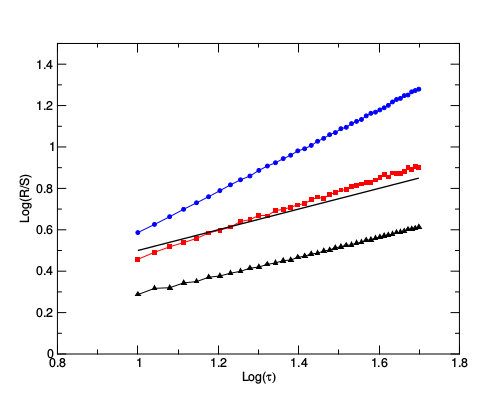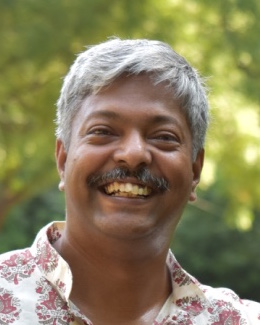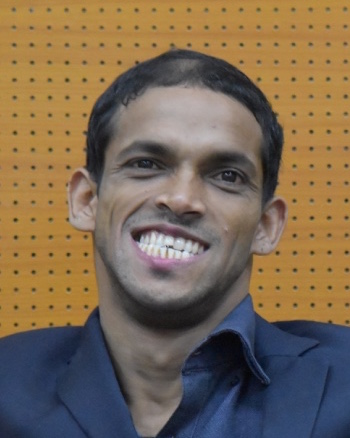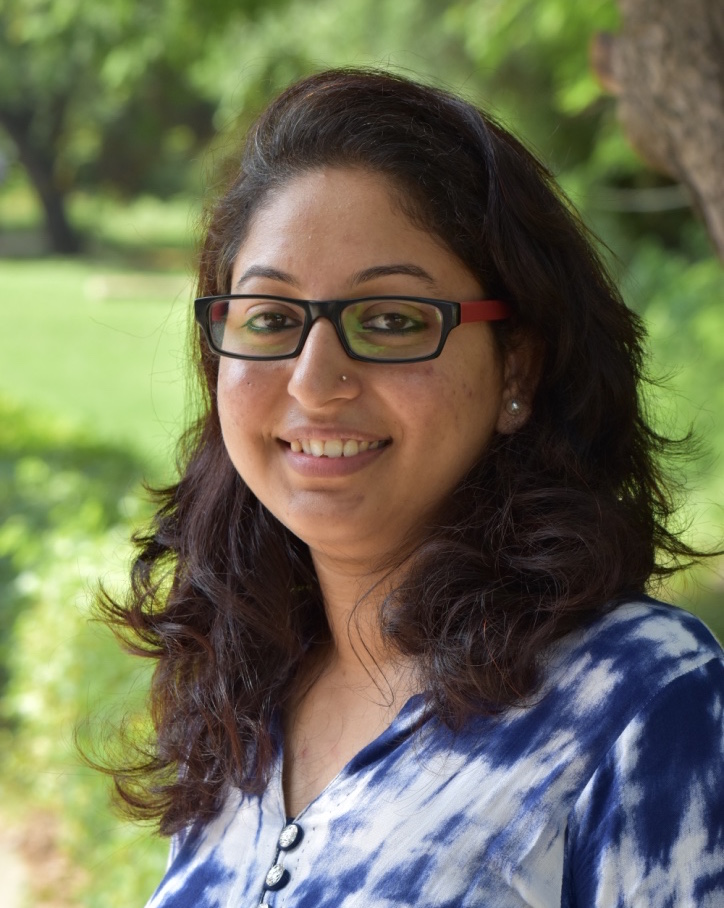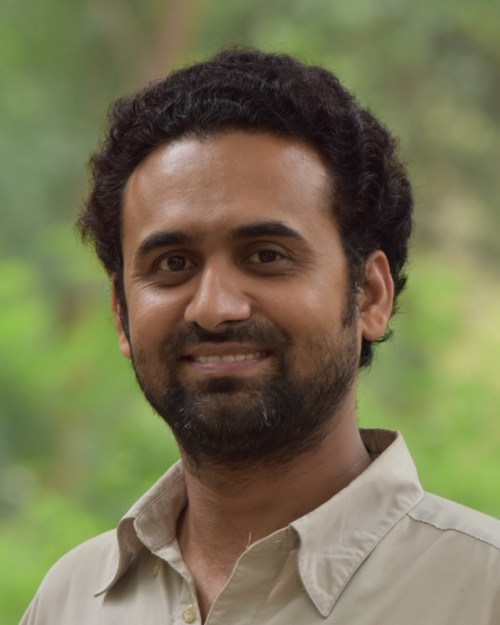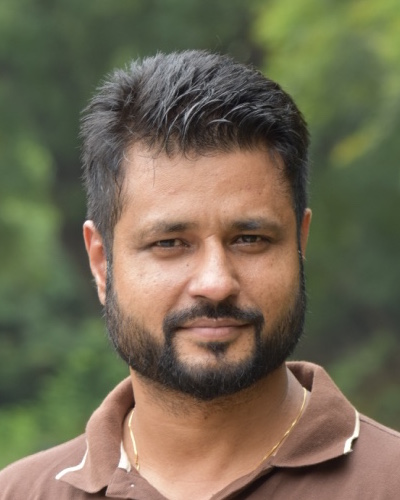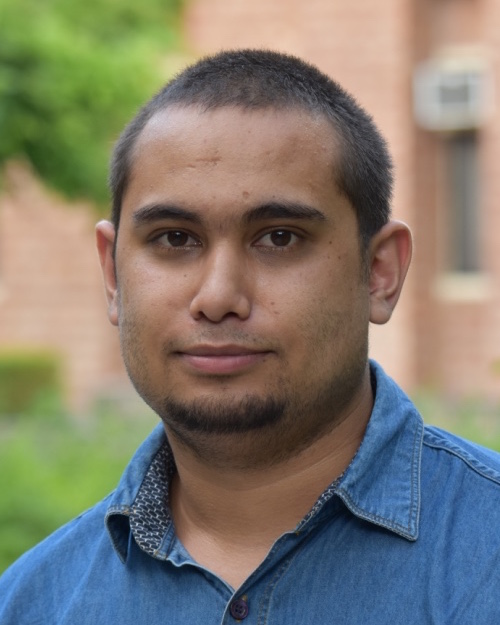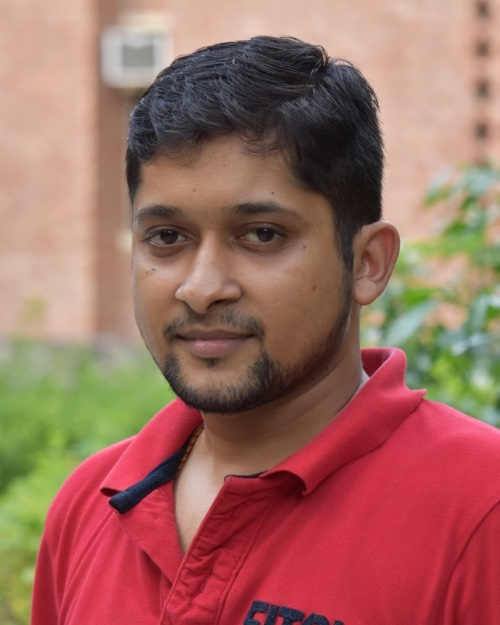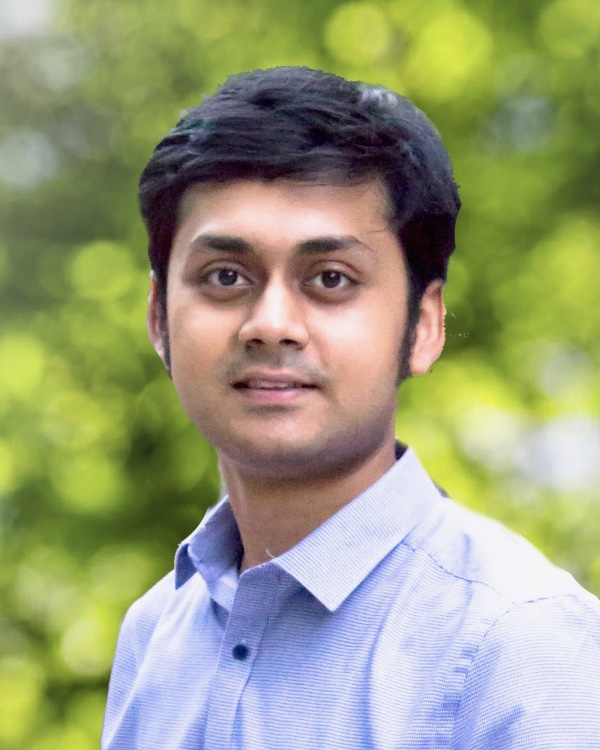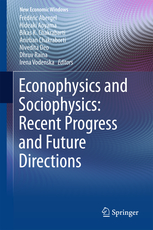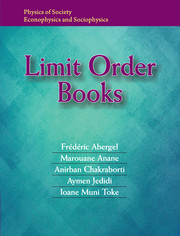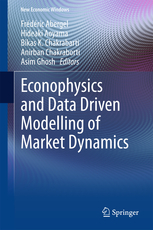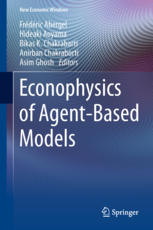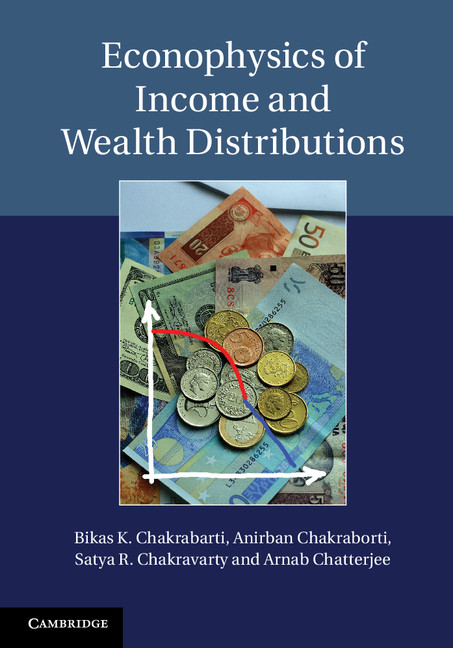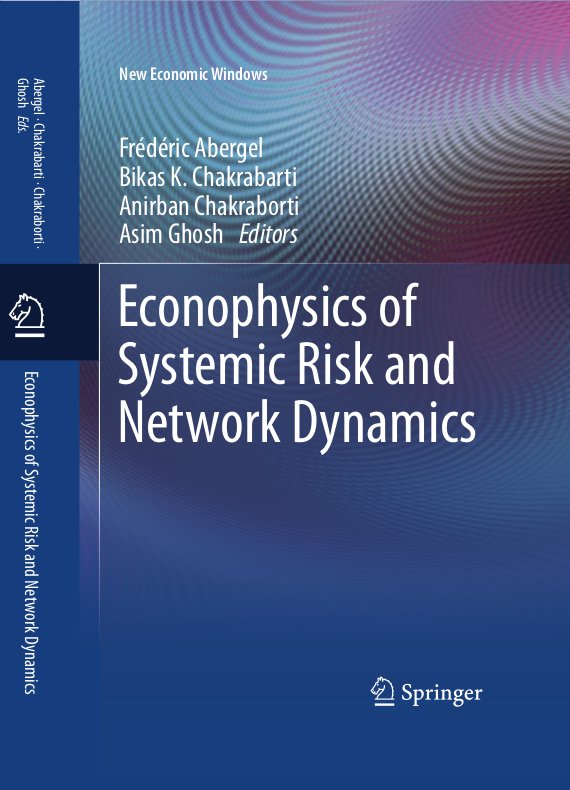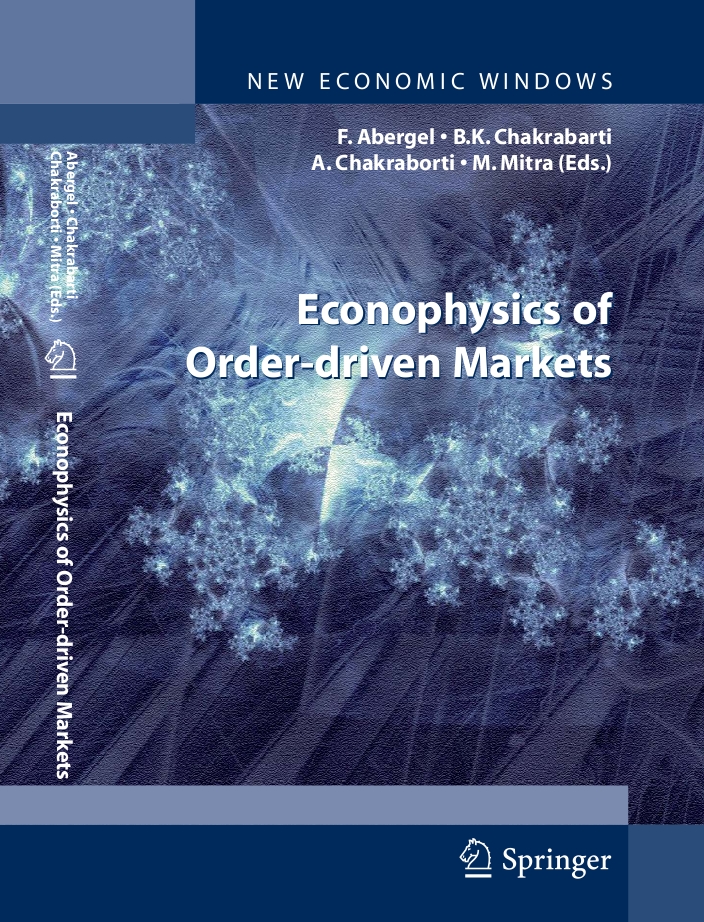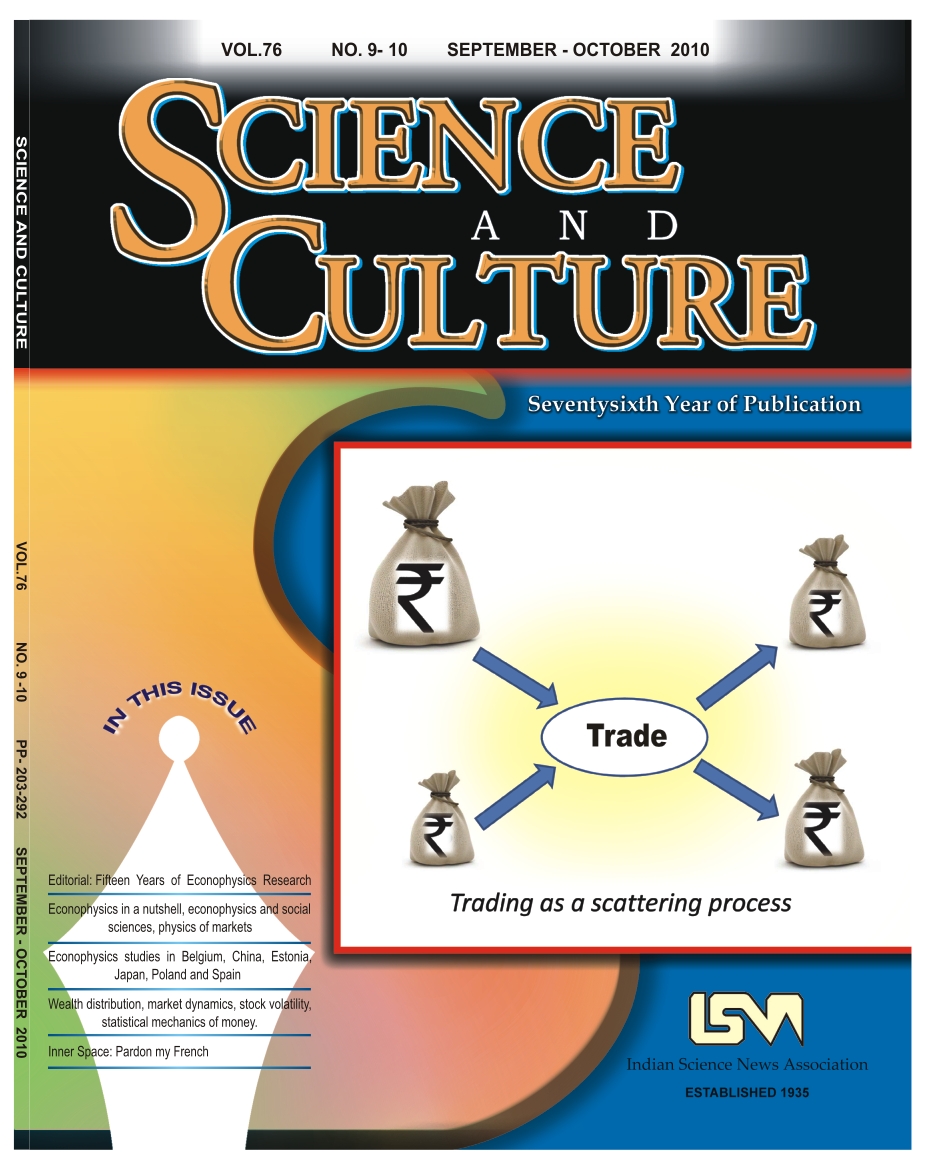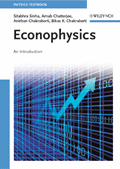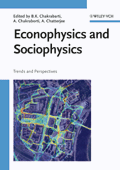 Research
Research
-
Econophysics & Sociophysics
Studies consist of conceptual approaches of socio-economic problems using methods of statistical physics. Prof. Anirban holds the distinction of being the first Ph.D in Econophysics from India. Some of the areas the lab has contributed are:
- Simulation of agent-based market models and their relation to physical theories.
- A statistical model of closed economy to analyze the relation between a 'microscopic equation' corresponding to Pareto Law and the macroscopic money distribution it results in. The conditions under which Pareto Law arises are of particular interest.
- A variant of the Cont-Bouchaud model has been developed and the circumstances under which the 'stylized facts' of empirical return distributions arise have been investigated. The 'herding behaviour' of human nature has also been of significant interest and studied using percolation theory.
- A study of minimal multiagent model for the collective dynamics of opinion formation in the society by modifying kinetic exchange dynamics studied in the context of income, money, or wealth distributions.

“Financial fluctuations anchored to economic fundamentals: A mesoscopic network approach”, Kiran Sharma, Balagopal Gopalakrishnan, Anindya S. Chakrabarti, Anirban Chakraborti, Scientific Reports (2017) [PDF] 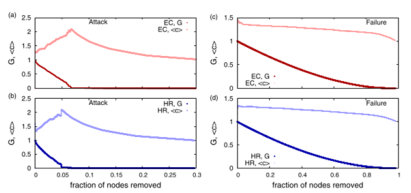
“A complex network analysis of ethnic conflicts and human rights violations”, Kiran Sharma, Gunjan Sehgal, Bindu Gupta, Geetika Sharma, Arnab Chatterjee, Anirban Chakraborti, Gautam Shroff, Scientific Reports (2017)[PDF] 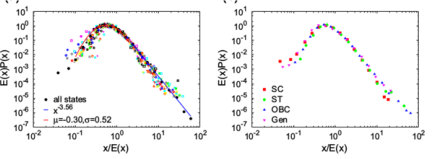
“Quantifying invariant features of within-group inequality in consumption across groups” Anindya S. Chakrabarti, Arnab Chatterjee, Tushar Nandi, Asim Ghosh, Anirban Chakraborti, J ECON INTERACT COORD ,(2017) [PDF] -
Complex Systems
A study of multiple unique interacting components and their adaptation to changing environment. Some of the areas of interest are :
- Multi-agent game models where agents adapt dynamically to perform better by modifying their strategies. The study of collective behaviour and dynamic evolution of multi-agent systems which can be adapted to model complex systems is of special interest.
- The adaptation mechanism based on genetic algorithms in the minority games were introduced to game theoretical models of market evolution. One aim of this study was to infer what happens at the system as well as at the individual agent level.
- Models giving rise to complex network structure as observed in World Wide Web, social relations, etc. and their properties. The economic interests of forming networks and the influence of economic principles on network dynamics is of special interest.

“Basic kinetic wealth-exchange models: common features and open problems”, M. Patriarca, E. Heinsalu, A. Chakraborti, Eur. Phys. J. B(2009) [PDF]

“Statistical mechanics of money: how saving propensity affects its distribution”, A. Chakraborti, B.K. Chakrabarti, Eur. Phys. J. B 17, 167–170 (2000) [PDF] -
Computational Finance
The lab has made significant analysis of stock market data, both low frequency(daily) and high-frequency (intraday tick-by-tick). The prominent areas of interest are :
- Empirical studies revealing the stastical properties of financial time series has been done. We continued with the statistical properties observed on order books in financial markets. Variables crucial to fine modeling of order flows and dynamics of order books were studied.
- We studied the time dependence of the recently introduced minimum spanning tree description of correlations between stocks, called the "asset tree'' and how it reflects the economic taxonomy. The nodes of the tree are identified with stocks and the distance between them is a unique function of the corresponding element of the correlation matrix.We also point out that the diversification aspect of portfolio optimization results in the fact that the assets of the classic Markowitz portfolio are always located on the outer leaves of the tree.
- We are intersted in inferring the correlations in stock prices with other variables such as stock transaction volumes as well as in the statistical distributions and laws which govern the price time series.
-
Statistical Physics
The research on statistical physics focuses not only to its application to problems in economic systems (Econophysics) but also to combinatorial optimization such as the Traveling Salesman problem, extreme value statistics and study of “complex systems”.
- Given a certain set of cities and the distances between them, a travelling salesman must find the shortest tour in which he visits all the cities and comes back to its starting point. Several important aspects of TSP have been studied which help to understand the physics of TSP better.
- The extreme event statistics plays an important role in the the time series analysis.Focusing, on the closely related density of “near-extremes”–the distance between a record and the maximal value–can render the statistical methods to be more suitable in the practical applications. We applied this proposed method in the empirical validation of an adapted financial market model of the intraday market fluctuations.
- We calculated the Hurst exponent and exponent from detrended fluctuation analysis, of different time series data in comparison to the random time series, including the financial time series, spatio-temporal time series generated from GARCH processes and also couple-map lattices in chaotic regime.
- Self-organized critical (SOC) systems have been one of the most widely studied topics in statistical physics in the last two decades.We have introduced a self-organizing model where agents trade with a single commodity with the money they possess, and studied the role of money in the economic market.

“Effect of bond-disorder on the phase-separation kinetics of binary mixtures: A Monte Carlo simulation study”, Awaneesh Singh, Amrita Singh, Anirban Chakraborti, The Journal Of Chemical Physics 147, 124902 (2017) [PDF] 
“Copulas and time series with long-ranged dependencies”, Rémy Chicheportiche, Anirban Chakraborti ,PHYSICAL REVIEW E 89, 042117 (2014)[PDF] 
“The travelling salesman problem on randomly diluted lattices: Results for small-size systems”, A. Chakraborti and B.K. Chakrabarti , Eur. Phys. J. B [PDF] -
Nanosciences
Our experimental study focuses on exploring the photophysical properties of nanomaterials, interaction of biomolecules with two dimensional nanosheets, sensing and imaging using nanomaterials. Different spectroscopy tools are used to investigate optical properties of the nanomaterials. Fluorescence spectroscopy is used for fluorescence resonance energy transfer (FRET) in nanomaterials. Raman spectroscopy technique is used for sensing of foreign molecules and the sensing is based on surface enhanced Raman scattering (SERS) by plasmonic nanoparticles.
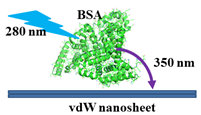
Investigating resonance energy transfer from protein molecules to van der Waals nanosheets (RSC Advances, 2017, 7, 26250–26255)[PDF] 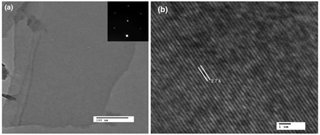
Resonance Raman scattering and ab initio calculation of electron energy loss spectra of MoS2 nanosheets (Physics Letters A, 2016, 380, 4057–4061)[PDF] 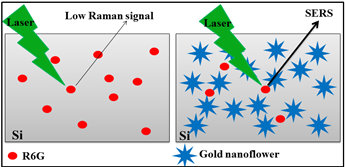
Gold nanoflowers as efficient hosts for SERS based sensing and bio-imaging (under review)[PDF]


